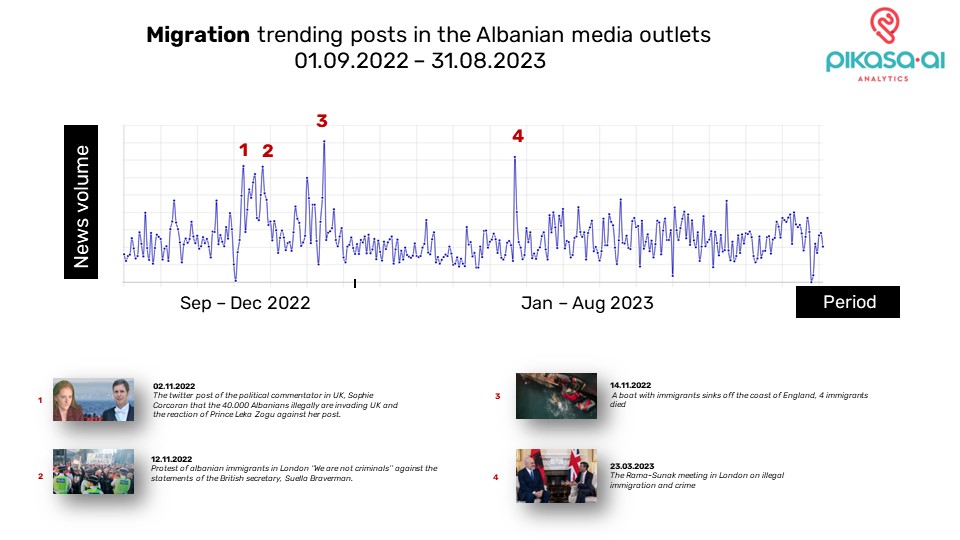

Over the past decade, the Western Balkans has witnessed a pronounced and enduring pattern of migration to Western countries. This trend is well-documented through both official statistics and media coverage. Here's an alternative presentation of the key details:
Migration Patterns:
Migration from the Western Balkans to Western nations has been a notable and sustained phenomenon in the last ten years.
Recent census data provides insights into the scale of this migration, with Bosnia and Herzegovina leading at 50.1% of the enumerated population, followed by Albania (41.9%), North Macedonia (31.6%), Kosovo (30%), Montenegro (24.4%), and Serbia (7.1%).
Media Attention:
Migration-related topics have gained substantial coverage in the Western Balkans from September 2022 to August 2023.
Countries such as Bosnia and Herzegovina, Kosovo, and Albania have featured prominently in media discussions on migration, with coverage percentages of 94.8%, 94.2%, and 90.5%, respectively.
Montenegro, North Macedonia, and Serbia have also seen considerable media attention, with percentages of 85.9%, 76.1%, and 72.3%.
Media Volume:
Albania stands out as a noteworthy center for news related to migration, accounting for 3% of the total news articles published in Albanian media outlets.
This data emphasizes that migration-related themes are significant factors in the Western Balkans. They are not only extensively covered by the media but also hold a prominent place in the public discourse and policy agenda within the region.
 The extensive coverage of migration in Albanian media over the past year can be attributed to a series of significant events and developments that have brought this topic to the forefront of public attention. Here's an overview of what has characterized the heightened focus on migration in Albanian media:
The extensive coverage of migration in Albanian media over the past year can be attributed to a series of significant events and developments that have brought this topic to the forefront of public attention. Here's an overview of what has characterized the heightened focus on migration in Albanian media:
Illegal Migration to Great Britain:
A primary driver for the increased media attention has been the surge in illegal migration from Albania to Great Britain, particularly involving the use of small boats.
Role of Smugglers and TikTok:
The distribution and promotion of these illegal migration activities on social media platforms, notably TikTok, by human smugglers have added a unique and alarming dimension to the issue.
Investigation by British Journalists:
The involvement of British journalists in investigating and reporting on this matter has drawn global attention to the situation. Their reports have shed light on the challenges and risks faced by Albanian migrants attempting to reach the UK.
Political Commentary and Debate in Britain:
The media coverage of this illegal migration trend has sparked political discussions and debates in the United Kingdom. British policymakers and commentators have examined the issue in the context of immigration policies and border security.
Albanian Protests in London:
The protests held by Albanian communities in London have been a significant factor in amplifying the media coverage. These protests have drawn attention to the concerns and motivations of the migrants, as well as the wider issues surrounding immigration.
Collectively, these events and developments have contributed to the virality of the migration topic in Albanian media. The combination of the human interest aspect, international investigations, and political debates has made this issue a focal point in the media landscape, reflecting the complex and evolving nature of migration-related challenges.
Methodology
Pikasa used its analytics.live media intelligence platform to conduct real-time online monitoring of more than 1,500 media in 6 countries of the Western Balkans Region (Bosnia and Herzegovina, Serbia, Montenegro, Kosovo, Albania and North Macedonia).
The analytics platform monitors media articles along with their respective penetration on social network platforms (Facebook, Instagram, YouTube, TikTok etc.) counting all types of activities and engagements.